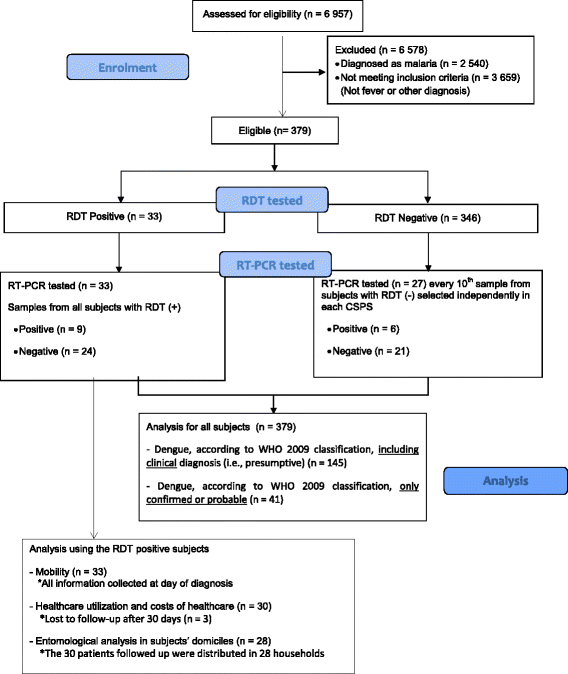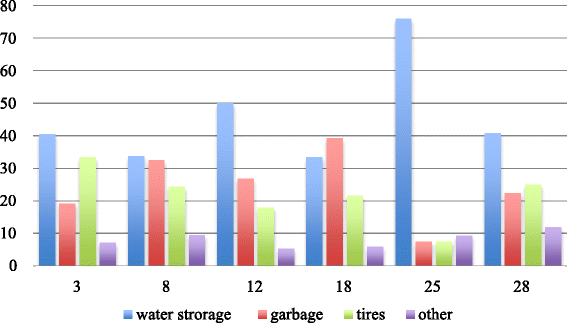Presence of three dengue serotypes in Ouagadougou (Burkina Faso): research and public health implications
- PMID: 27044528
- PMCID: PMC4820922
- DOI: 10.1186/s40249-016-0120-2
Presence of three dengue serotypes in Ouagadougou (Burkina Faso): research and public health implications
Abstract
Background: The significant malaria burden in Africa has often eclipsed other febrile illnesses. Burkina Faso's first dengue epidemic occurred in 1925 and the most recent in 2013. Yet there is still very little known about dengue prevalence, its vector proliferation, and its poverty and equity impacts.
Methods: An exploratory cross-sectional survey was performed from December 2013 to January 2014. Six primary healthcare centers in Ouagadougou were selected based on previously reported presence of Flavivirus. All patients consulting with fever or having had fever within the previous week and with a negative rapid diagnostic test (RDT) for malaria were invited to participate. Sociodemographic data, healthcare use and expenses, mobility, health-related status, and vector control practices were captured using a questionnaire. Blood samples of every eligible subject were obtained through finger pricks during the survey for dengue RDT using SD BIOLINE Dengue Duo (NS1Ag and IgG/IgM)® and to obtain blood spots for reverse transcription polymerase chain reaction (RT-PCR) analysis. In a sample of randomly selected yards and those of patients, potential Aedes breeding sites were found and described. Larvae were collected and brought to the laboratory to monitor the emergence of adults and identify the species.
Results: Of the 379 subjects, 8.7 % (33/379) had positive RDTs for dengue. Following the 2009 WHO classification, 38.3 % (145/379) had presumptive, probable, or confirmed dengue, based on either clinical symptoms or laboratory testing. Of 60 samples tested by RT-PCR (33 from the positive tests and 27 from the subsample of negatives), 15 were positive. The serotypes observed were DENV2, DENV3, and DENV4. Odds of dengue infection in 15-to-20-year-olds and persons over 50 years were 4.0 (CI 95 %: 1.0-15.6) and 7.7 (CI 95 %: 1.6-37.1) times higher, respectively, than in children under five. Average total spending for a dengue episode was 13 771 FCFA [1 300-67 300 FCFA] (1$US = 478 FCFA). On average, 2.6 breeding sites were found per yard. Potential Aedes breeding sites were found near 71.4 % (21/28) of patients, but no adult Aedes were found. The most frequently identified potential breeding sites were water storage containers (45.2 %). Most specimens collected in yards were Culex (97.9 %).
Conclusions: The scientific community, public health authorities, and health workers should consider dengue as a possible cause of febrile illness in Burkina Faso.
Keywords: Acute febrile non-malaria cases; Aedes; Burkina Faso; Cost; Dengue; Fever; Health system; Mobility.
Figures
References
-
- WHO . Atlas of African Health Statistics 2014. Health situation analysis of the African Region. Geneva: World Health Organization; 2014.
-
- WHO/AFRO . The health of the people: what works – the African Regional Health Report 2014. Brazzaville: World Health Organization, Regional Office for Africa; 2014.
Publication types
MeSH terms
Grants and funding
LinkOut - more resources
Full Text Sources
Other Literature Sources
Medical






